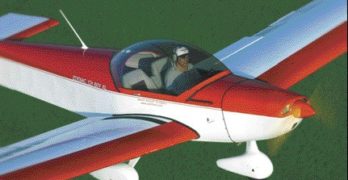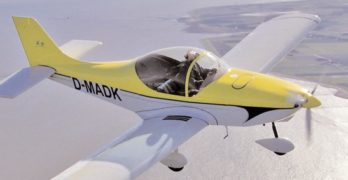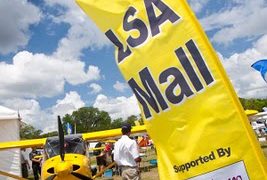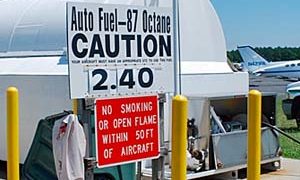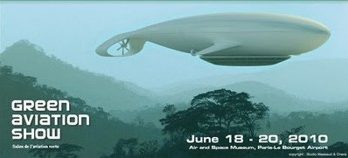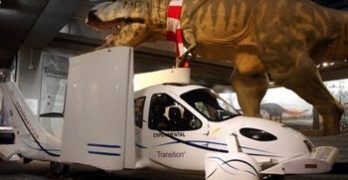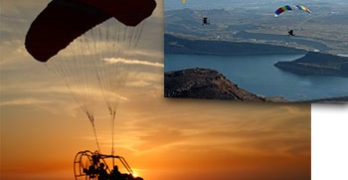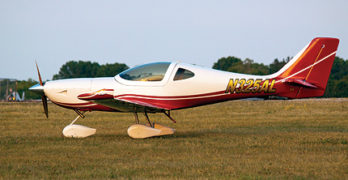The Sleeping Giant Wakes… Big news from China: IndUS Aviation threw a big lunch bash today at Oshkosh to break word of its exciting new program to shift production of all its Thorpedo LSA to China, as part of a unique collaboration with the country’s government and private industry to begin to grow Chinese General Aviation. *** The program will launch this fall at the new LuYangHU General Aviation Development Zone in Weinan, China. There is currently no GA permitted in the country. This will be the first — carefully studied and controlled, to be sure — attempt to bring private aviation to Chinese citizens: a fascinating period in history, and one that, with this partnership, aims to open the country wide to sales of light sport aircraft from all over the world. *** Indus will build LSA for its domestic market as well as worldwide — including Chinese citizens.
Search Results for : Flight Design
Not finding exactly what you expected? Try our advanced search option.
Select a manufacturer to go straight to all our content about that manufacturer.
Select an aircraft model to go straight to all our content about that model.
FPNA A-22 Capetown Amphibian
Capetown RacingLight-sport floatplane that’s a joy to fly
America has far more lakes than airports. By itself, my home state of Minnesota has more lakes than the entire nation has airports. Given this 50:1 advantage, floatplanes or seaplanes make a lot of sense; there are many places you can land, plus you can reach interesting locations you never considered in a land plane.
Lucky me. I’ve gotten to fly lots of light floatplanes and I get a huge smile on my face every time I launch from water or splash down in a lake. The sensation has no match in landplanes. Once you’ve flown a floatplane, you’ll forever look at flying through a new lens.
Imagine flying a mere wingspan above the water, safely|hopping over small islands and zooming down to the water’s surface on the far side, always landing directly into the wind, taxiing up to a dock or beaching on the sand or stopping to do a little fishing while standing on one float.
Budget Builds (Low Cost Homebuilts)
Yes! You can build and fly a “real” airplane for the cost of a new SUV.
Contrary to popular opinion,
airplanes don’t have to be outrageously
expensive-at least not
all of them. The Sport Pilot/Light-Sport
Aircraft initiative is one program that
promises to lower the cost of ready-to-fly
aircraft. But many of these Special LSAs
and Experimental LSAs will be priced
well more than $40,000 and can run
upwards of $85,000.
One way to get airborne for less
than $40K is to choose an ultralight,
powered parachute or weight-shift
trike. But if you want something more
conventional, more comfortable or
larger, you’re likely to find what you
want in the world of kit aircraft. After
all these years, building an Experimental/
Amateur-Built airplane still qualifies
as one of the least expensive ways
to get a get a great airplane into the air
on a reasonable budget.
Our $40K benchmark is designed
to narrow the field for builders on a
budget-and that benchmark means
a completed, ready-for-flight airplane.
Breezer Aircraft and the New Breezer II
Close to Perfect
It usually takes more than one
try to get something right. To
get close to a perfect aircraft
usually takes many iterations, but
Breezer Aircraft has come very close
to producing a wonderful light sport
aircraft with their Breezer II.
We’ve seen the Breezer before when
the U.S. importer brought the thennew
model to AirVenture Oshkosh
’05. I flew it that year and recently
got the chance to fly the Breezer II.
While many of the good qualities
found in the earlier model were
retained, some nice improvements
have been made. But it isn’t the airplane
that is the real story. As experienced
airplane buyers know, it is
often the company behind the airplane
that is the main story.
Breezer’s Brief Design History
The design history is brief because the Breezer
is a new aircraft, not seen before ’05 except during
its early development. That older, original Breezer
was produced under agreement by Comco-Ikarus,
the same folks that make one of Germany’s bestselling
ultralights (a different class than American
ultralights), the C-42.
FAA To Change ASTM Certification?
News began filtering out today that FAA informed LAMA (Light Aircraft Manufacturers Assoc.) that it is strongly considering imposing new mandates on how S-LSA designs are approved. *** LAMA chairdude Dan Johnson sent a strong message to LAMA members that FAA may require LSA makers to pass compliance audits managed by a team of FAA inspectors, rather than the manufacturer-certified voluntary nature of the certification program as it now exists, where airframe builders can pay for an audit through LAMA, but are not required to do so. *** Earl Lawrence of EAA talked in depth about this development on the Ultraflight radio program Tuesday July 13th; check their archives to hear the full interview. I appeared on the radio show later in the program to talk about the state of the industry and what’s coming with electric LSA. *** I also got more info from Dan on what this portends for the S-LSA industry as a whole.
Why the Raging Avgas Debate?
Have you missed the great debate raging over the impending demise of 100LL? Many leading groups — including AOPA and apparently EAA plus others such as the Green 100 Octane Coalition — have endorsed a one-size-fits-all solution. *** But, hey! One size does not fit all. Light-Sport owners are aware their aircraft can operate just fine on 91 octane (premium) ethanol-free gasoline. The same can be said for 70%-80% of all piston-engine aircraft in the U.S. Indeed, more than 60,000 Autogas STCs have been granted from EAA and Petersen Aviation but such added approvals aren’t needed by LSA powered by Rotax or Jabiru. *** Leading aviation alphabet groups show little support for the installation of ethanol-free Mogas pumps at GA airfields. One wonders why? Several benefits follow increased use of E-zero (E0) Mogas: * It’s ideal for the vast majority of American aircraft including virtually all new LSA designs; * It would lead to an immediate reduction in the use of leaded fuels and its impact on the environment; and, * Switching from 100LL to Mogas would dramatically reduce the cost of flying for sport aviators and to flight schools adding LSA to their fleets.
Paris Green Air Show
A couple days ago I promised to follow up on the Paris Green Air Show so here we go. *** The show is held (2010 is the 2nd year) at the Musee Air + Despace, at Le Bourget airport, the field where Charles Lindbergh landed the Spirit of St. Louis and where the huge Paris Air Show takes place every other year (next up in 2011). *** It’s mission statement is implicit from the phrase on the evocative splash drawing: “L’aviation du futur”. It took a bit of digging and some web translations to find out more about the show that Gizmag first posted about the other day. *** The explosion of imaginative designs and concepts at the show is staggering: very much like the first years of aviation after 1903. Dirigibles large and small, including man-powered balloons; aircraft engines with zero CO2 emissions; aircraft powered by electric, solar and hydrogen fuel cell engines; noise and pollution reducing sustainable development concepts for airports, runways and aircraft “villages.” All in all, quite a hoot; I’d love to go to the next one.
Flying Car Weight Bump; Electric Motorglider!
After taking a few days off to boat around Lake George, NY and shoot the Red Bull Air Race in New York City, it’s time to catch up on what’s been happening. *** The Transition “Roadable Aircraft” (I can’t help but prefer the chummier “flying car”) just got a weight exemption nod from FAA for an additional 110 pounds of MTOW (max takeoff weight). That nudges the vehicle up to 1,430 pounds. *** Terrafugia‘s request for the bump is meant to provide “…the structure and equipment necessary for compliance with the Federal Motor Vehicle Safety Standards (FMVSS) which are not found in other Light Sport Aircraft.” *** They’re talking about things such as airbags, energy absorbing crumple zone and protective safety cage. *** Interestingly, Transition’s maker Terrafugia initially asked for an MTOW of 1,474 pounds. FAA in effect said “You can have what we gave the amphib makers, but no more.” *** This evokes the ultralight days, when the original 150 lb.
Predator Powered Parachute… & Immersion Training
Another one managed to slip by my radar. I follow LSA closer than most yet I can barely keep track of all the approvals. No wonder I frequently get calls asking me to unravel the puzzle of LSA makes and models. *** Better late than never, welcome the Predator powered parachute to our SLSA List of 108 models from 72 still-active companies (at least five have left the business). Scott Hughes is the original designer & creator of the Predator. *** New CEO Fredrick Scheffel wrote, “On April 22, 2009, SkyTrails LSA (Predator Powered Parachute LLC) purchased the rights to manufacture the Predator along with the tooling & inventory from Hughes Aero.” SkyTrails LSA moved into the hangar facilities where Hughes Aero had been building the Predator for the past four years. Scheffel further noted, “SkyTrails Ranch, Inc., is a long standing name in powered parachute training, sales, and service that [has now] expanded into powered parachute manufacturing.” *** National powered parachute expert, Roy Beisswenger confirmed the Predator as a Special LSA, “SkyTrails LSA is manufacturing ELSA & SLSA aircraft at the airport in Wharton, Texas.” *** Learning to fly a powered parachute can be challenging.
Arion Lightning LS-1: Smokin Lightning
An all-American speedster that flies as fast as the law allows
The first one I saw was gorgeous, even bare of paint accents. That Arion Lightning prototype looked undeniably smooth and, well, fast as lightning. Pilots are inspired by lovely flying machines, and on the factory ramp in Shelbyville, Tenn., was one of the most fetching examples of an LSA I had ever seen.
Arion Aircraft’s Lightning LS-1 (www.flylightning.net) isn’t new. Indeed, in three years, the company has sold 80 kits, and 40 already are flying. Now comes a ready-to-fly airplane, an all-American flying machine that’s able to hit the LSA max speed of 120 knots (138 mph). The Lightning’s smokin’ fast speed, however, is just one measurement of its appeal.
Wherever it goes, the Lightning gathers admiring glances. That’s no surprise, as it’s an amalgam of the former Esqual from Spain with touches of Van’s RVs, the Aerospool Dynamic, various Lancair models and the also-Spanish Toxo LSA-each as shapely as a fashion model.
- « Previous Page
- 1
- …
- 102
- 103
- 104
- 105
- 106
- …
- 147
- Next Page »




